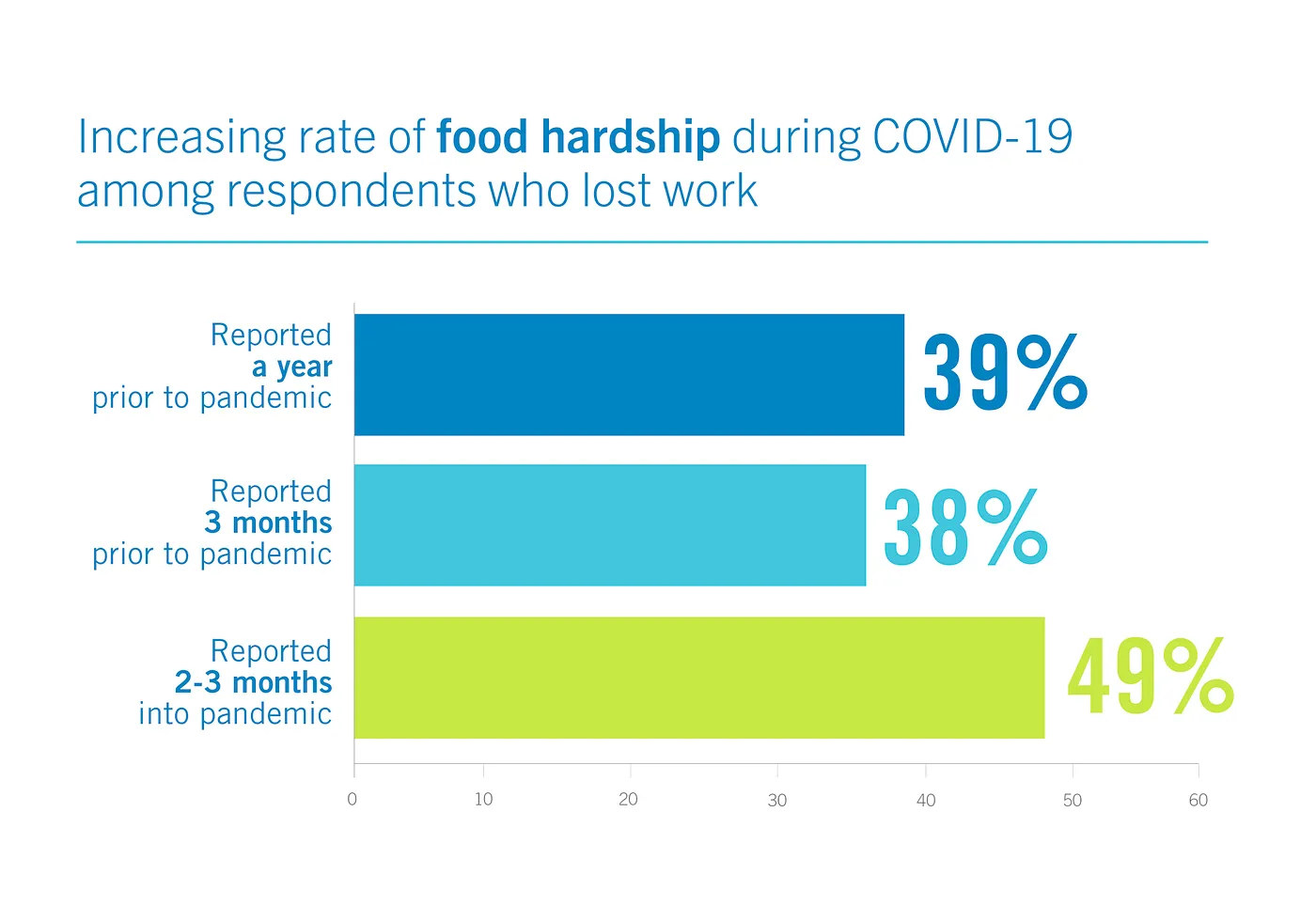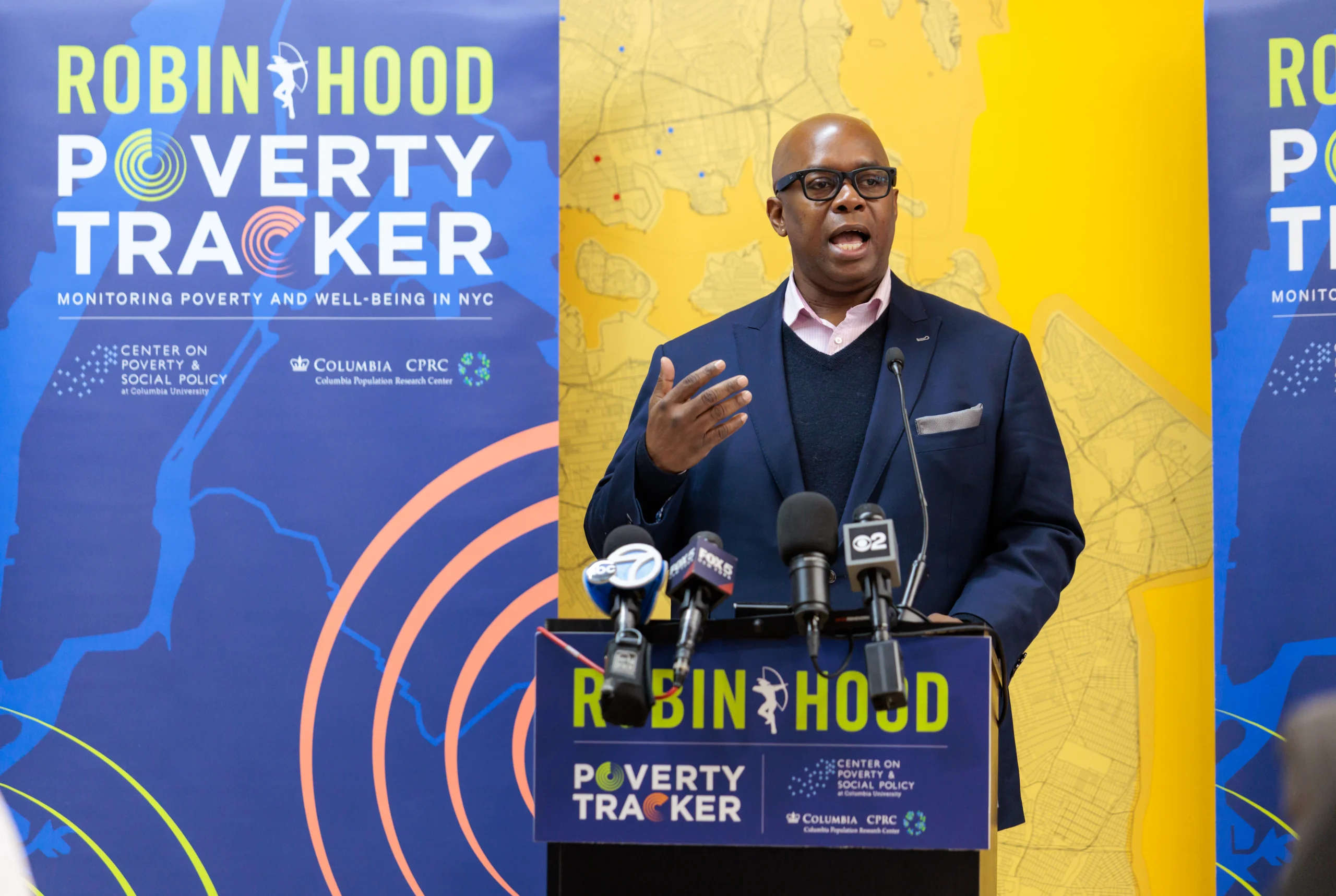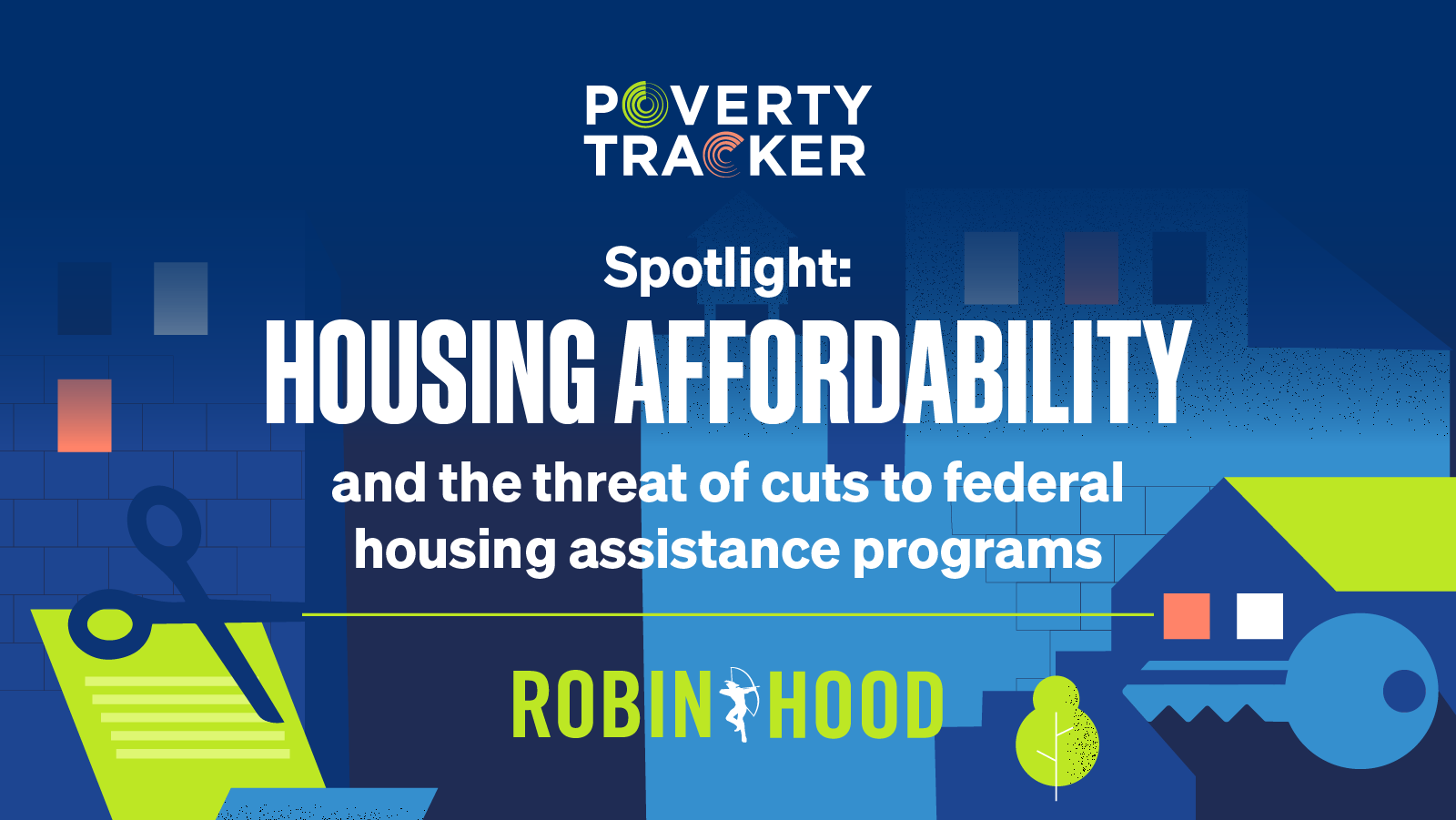May 26, 2020
Poverty Tracker Spotlight: COVID-19, Poverty & Food Hardship
Prior to the COVID-19 outbreak, many New Yorkers struggled to keep food on the table, and the pandemic has only exacerbated this crisis. The early days of the pandemic were marked by grocery store lines that wrapped around city blocks and empty store shelves, cleared by those who could afford to stock up. Soon after, the City was put “on pause,” and the lives of workers and their families were entirely upended. Preliminary data from the Poverty Tracker, a longitudinal-study of poverty and wellbeing in New York City, indicates that about half (51 percent) of respondents who were working before the outbreak have been laid off or have lost work-related income for a reason related to COVID-19. During this economic turmoil and uncertainty, food hardship has only intensified. Families wait in lines for blocks to be served by the food pantries which have managed to stay open — a visual illustration of the inadequacy of the federal policy response to address food hardship during this crisis. But food hardship in New York City did not start with this pandemic.
Food hardship was prevalent in New York City before the COVID-19 Outbreak.
Prior to the COVID-19 outbreak, roughly 40 percent of families in New York City experienced some form of food hardship, defined as often or sometimes running out of food or worrying that food would run out before there was enough money to buy more. 1 And in some neighborhoods, the rate of food hardship was even higher: for example, 70 percent of families in the Concourse, Highbridge and Mount Eden areas of the Bronx faced food hardship. These startling statistics show that New York City was already in the midst of a food hardship problem pre-COVID-19.
COVID-19 has further intensified food hardship in New York City.
Preliminary data from a new Poverty Tracker survey on the economic impacts of COVID-19 show that food hardship rates are increasing dramatically among those who have lost work due to COVID-19. Nearly 50 percent of respondents who lost work or income reported experiencing food hardship in the past three months (see Figure 1), compared to 38 percent before the pandemic, marking a nearly a 30 percent increase since COVID-19 hit.

Figure 1. Rate of food hardship during the COVID-19 outbreak, three-months prior to the outbreak, and a year prior to the outbreak among respondents who have lost work
Rates of food hardship are even higher among Hispanic and Black (non-Hispanic) respondents who have lost work or income for a reason related to COVID-19. Preliminary data show that more than two-thirds (67 percent) of Hispanic and Black (non-Hispanic) respondents who have lost work due to the COVID-19 outbreak reported experiencing food hardship compared to 39 percent of all respondents who have lost work.
Gaps in the policy response enable this problem to persist.
The federal government’s response to the widespread economic consequences of COVID-19 has included provisions to combat growing food hardship, but existing policy will not be enough to meet the growing needs of families across New York City.
Together, the Families First Act and the Coronavirus Aid, Relief, and Economic Security (CARES) Act:
- Increase SNAP benefits to the maximum value for all recipients for two months
- Provide additional supplements (Pandemic-EBT) through the beginning of the summer for school-aged children who are not receiving lunch at school
- Waive work requirements that often preclude able-bodied adults without dependents from receiving SNAP benefits for more than three months
But these provisions have an expiration date that will almost certainly precede the end of this economic crisis, and they leave out many families with young children. In addition, many New Yorkers who might not be SNAP-eligible are facing economic hardship but are unable to turn to SNAP for assistance. The recommendationsbelow, most of which were recently passed by the House in the HEROES Act, would drastically reduce rates of food hardship during this crisis:
- Expand Pandemic-EBT program to include infants, toddlers, and low-income college students
- Extend Pandemic-EBT through the summer months, and possibly longer
- Increase SNAP benefits and support outreach programs for the duration of the economic crisis and recovery period
- Allow for Disaster-SNAP, which has different eligibility requirements than the traditional SNAP program and is often employed in disaster situations — such as natural disasters and 9/11 — in response to the instability and uncertainty that emergencies produce.
Importantly, these recommendations allow SNAP recipients to purchase food at the grocery store, instead of needing to turn to food pantries. Relying on pantries to meet growing needs at this time is problematic. According to city officials, since the COVID-19 crisis began, approximately 35 percent of the city’s more than 1,000 food pantries, soup kitchens, and mobile pantries have closed. 2 Food pantries largely rely on volunteer staff, many of whom are older adults, and as social distancing guidelines and health concerns about COVID-19 persist, many pantries lack sufficient staff to continue serving meals to those in need. Pantries also report shortages in supply, as shipping delays and supply chain disruptions make it harder to get food quickly.
Final Thoughts
The preliminary Poverty Tracker data discussed here document the disturbing increase in food hardship resulting from the COVID-19 outbreak, and persistent food hardship compromises the long-term well-being of the city’s population. New Yorkers are losing their incomes as they selflessly follow the guidelines that promote public health and safety; doing so should not put their own health and safety in jeopardy.



